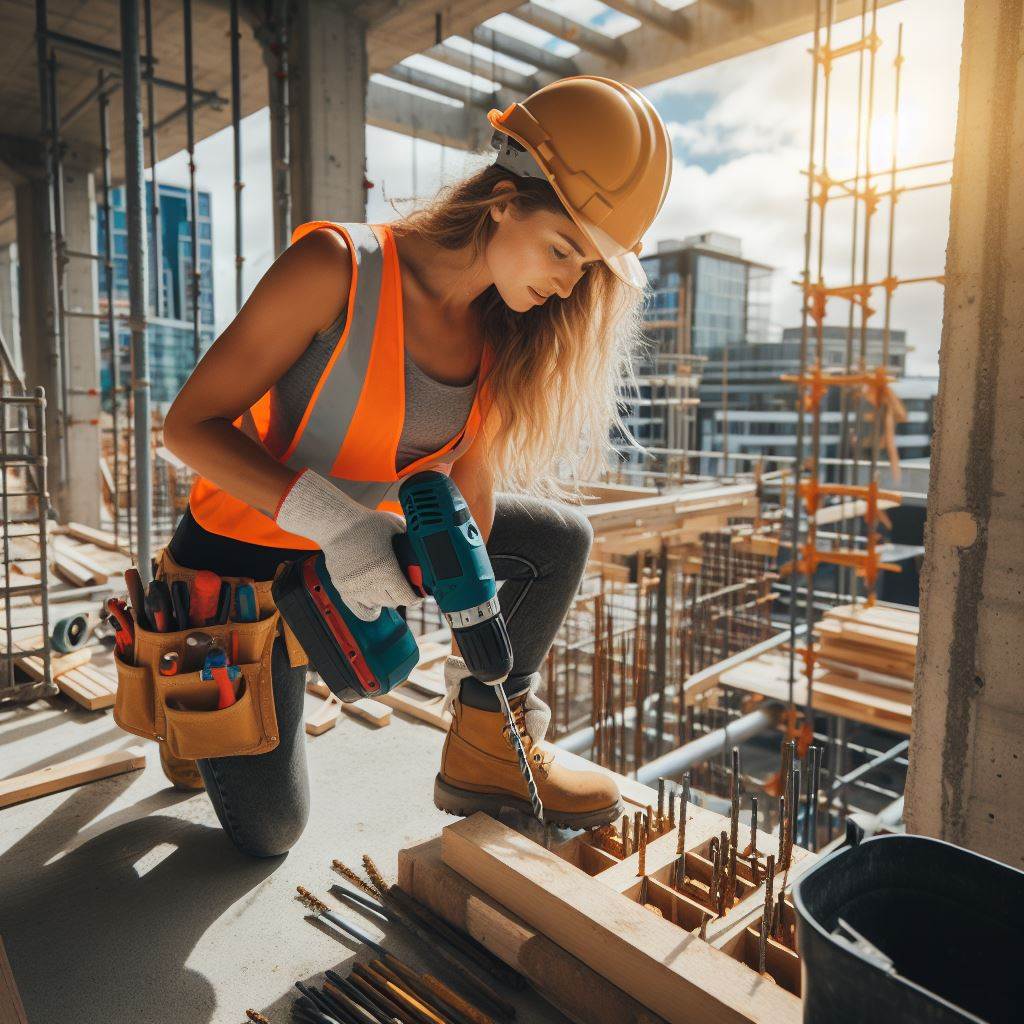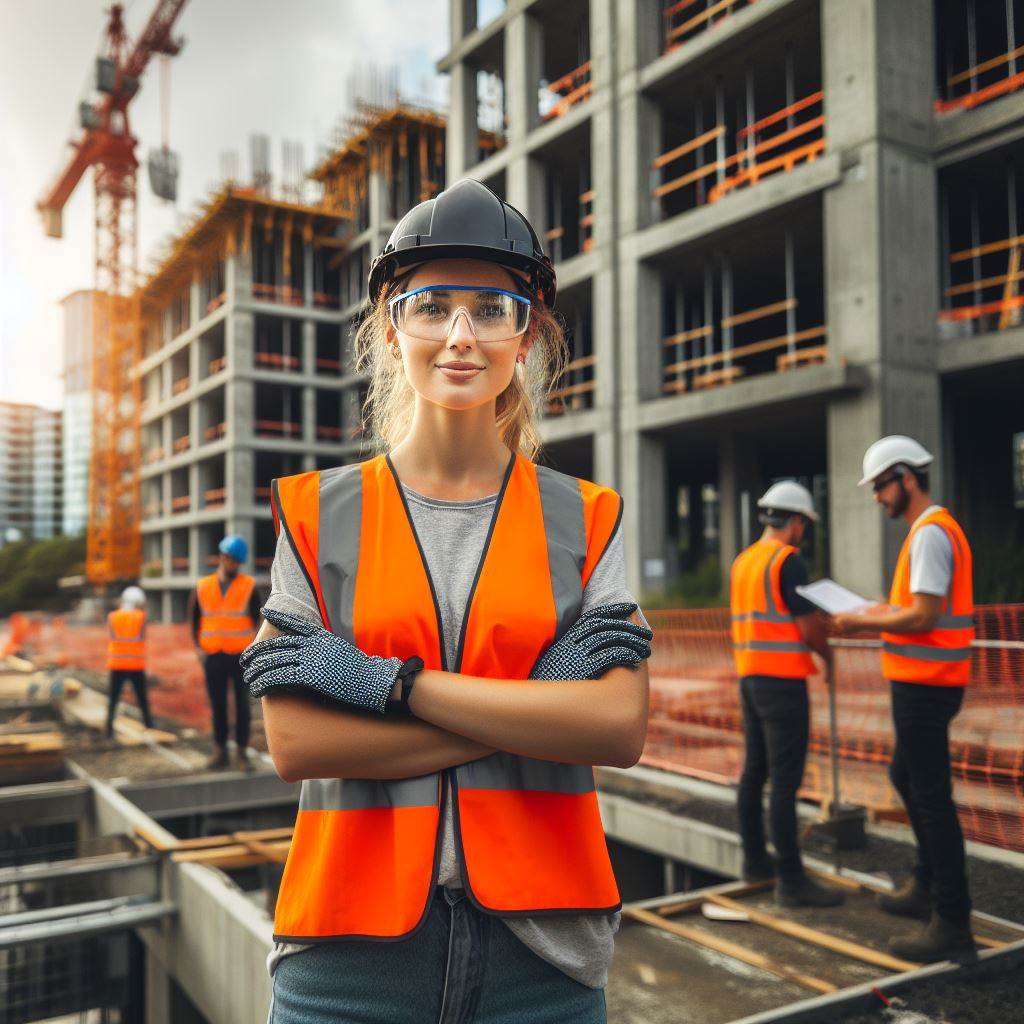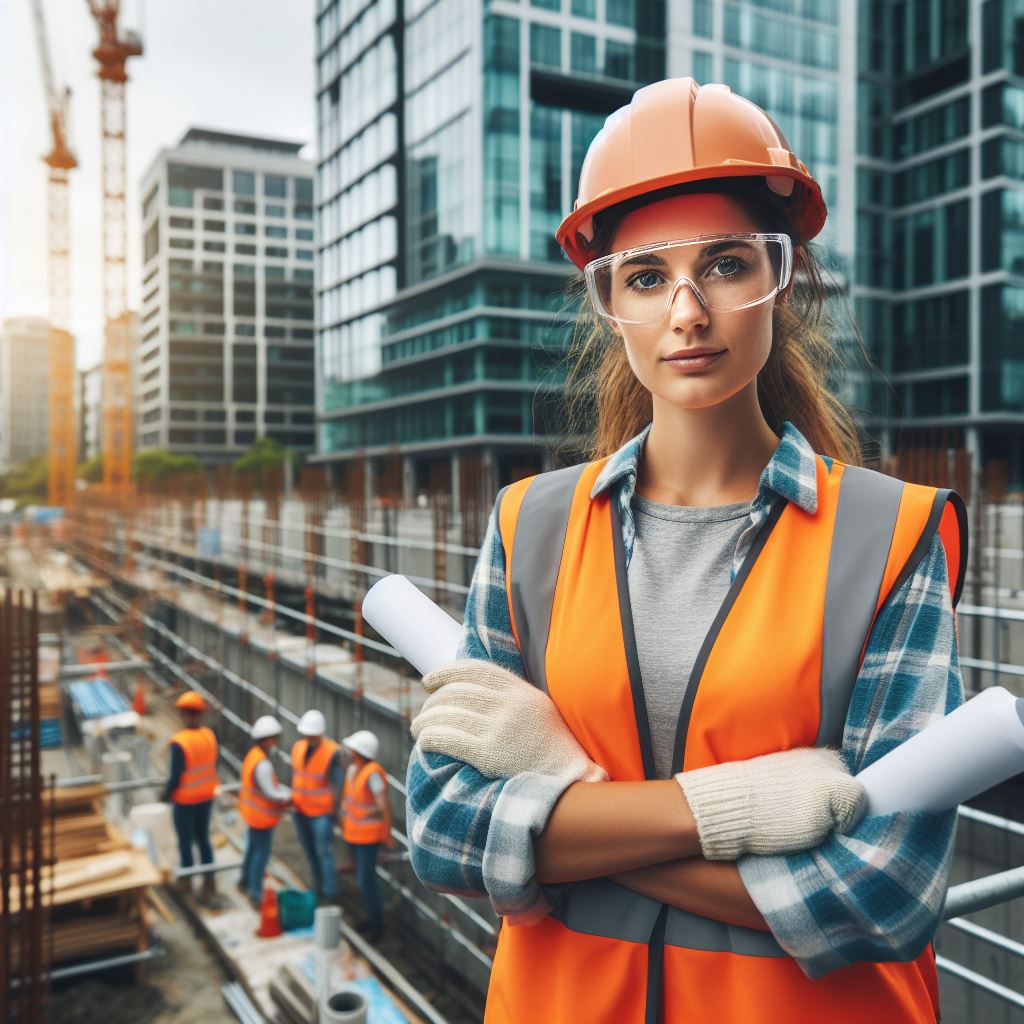Introduction
New Zealand pioneers green building, evident in stringent regulations and innovative designs reshaping urban skylines.
From Wellington to Auckland, sustainable architecture thrives, prioritizing energy efficiency and occupant well-being.
Innovative technologies like solar panels and green roofs transform concrete jungles into vibrant ecosystems.
Government incentives encourage green practices, while the Green Building Council spearheads sustainability initiatives.
Collaboration drives the construction sector towards meeting the changing world’s demands.
Compact, walkable neighborhoods promote community engagement and reduce reliance on cars.
Mixed-use developments blend residential, commercial, and recreational spaces for vibrant urban hubs.
Sustainable transportation options enhance livability and reduce pollution, reflecting the Maori concept of kaitiakitanga.
New Zealanders recognize their responsibility as custodians of the land, ensuring a greener future.
In short, New Zealand’s green building movement shapes a sustainable, resilient future for all.
Definition of Green Building
Explanation of green building concept
Green building, also known as sustainable or eco-friendly building, refers to the practice of constructing structures that have minimal impact on the environment throughout their lifecycle.
It encompasses the use of resource-efficient materials and systems to reduce waste and conserve energy, water, and other natural resources.
Green buildings are designed and constructed to minimize their carbon footprint, reduce energy consumption, and protect human health and the environment.
They aim to optimize the use of renewable energy sources, maximize natural light, and provide superior indoor air quality.
Key principles and benefits of green building
- Energy efficiency: Green buildings emphasize energy-efficient design and innovative strategies to reduce energy consumption.
Through the use of technologies such as solar panels, LED lighting, and insulation, buildings can significantly lower their dependency on non-renewable energy sources. - Water conservation: Green buildings incorporate water-saving fixtures and systems to minimize water wastage.
Features like low-flow toilets, rainwater harvesting systems, and efficient irrigation methods help reduce water usage and contribute to sustainable water management. - Waste reduction: Green buildings prioritize waste reduction and recycling.
They utilize sustainable construction materials, such as recycled steel, reclaimed wood, and low-impact concrete, to minimize waste generation during the construction process.
Additionally, incorporating recycling programs within the building helps divert waste from landfills. - Improved indoor air quality: Green buildings prioritize the health and well-being of occupants by ensuring good indoor air quality.
This is achieved through proper ventilation systems, the use of low-emission materials, and the avoidance of harmful chemicals and pollutants. - Enhanced occupant comfort: Green buildings focus on creating comfortable and healthy living or working spaces for occupants.
This includes features like proper insulation, daylight utilization, and acoustic design to promote a comfortable and productive environment. - Reduced operating costs: Green buildings often have lower operating costs due to their energy-efficient design and reduced reliance on utilities.
Energy and water-saving measures can lead to substantial long-term savings and increased property value. - Environmental sustainability: Green buildings contribute to the overall sustainability of the built environment.
By reducing carbon emissions, conserving resources, and promoting eco-friendly practices, they help mitigate climate change and preserve natural resources for future generations.
Basically, green building encompasses the construction and operation of environmentally responsible structures that prioritize energy efficiency.
Water conservation, waste reduction, improved indoor air quality, occupant comfort, reduced costs, and overall environmental sustainability.
Implementing green building principles in New Zealand helps combat climate change, conserve natural resources, and create healthier and more sustainable communities.
Current Green Building Practices in New Zealand
Overview of the existing green building standards and certifications
Green building practices have gained significant momentum in New Zealand due to the country’s commitment to sustainability.
The following are some of the existing green building standards and certifications:
- The Green Star NZ Certification: This is a widely recognized certification program that assesses the environmental impact and performance of buildings.
It evaluates various aspects such as energy efficiency, water efficiency, indoor environmental quality, and materials used. - Homestar Certification: This certification focuses on residential buildings and rates them on a scale of 1 to 10 based on their sustainability performance.
It considers factors like energy, water, and waste management, as well as indoor environmental quality. - Living Building Challenge: This is an international certification program that sets stringent benchmarks for sustainability.
It requires buildings to achieve net-zero energy and water consumption and to use non-toxic materials throughout the construction process.
Description of popular sustainable construction materials used in New Zealand
New Zealand has embraced the use of sustainable construction materials to reduce environmental impact and promote sustainable practices. Some of the popular materials being used include:
Personalized Career Consulting
Unlock your potential with expert career advice tailored to your goals. Get personalized guidance and actionable steps toward your dream career in New Zealand.
Get Started- Timber: Timber is a renewable resource that is widely available in New Zealand. It is commonly used for framing, cladding, and flooring in green buildings.
- Rammed Earth: Rammed earth construction involves compacting soil in layers to create sturdy walls. It is an environmentally friendly option that offers excellent thermal properties.
- Recycled Materials: The use of recycled materials, such as reclaimed timber, glass, and steel, is gaining popularity. These materials reduce waste and contribute to a circular economy.
- Sustainable Insulation: High-quality insulation materials, like sheep’s wool, recycled polyester, and cellulose, are being used to improve energy efficiency and thermal performance.
Examples of energy-efficient building designs and technologies in the country
New Zealand is at the forefront of energy-efficient building designs and technologies. Some notable examples include
- Passive Design: Buildings are designed to maximize natural light and ventilation, reducing the need for artificial lighting and mechanical cooling.
- Solar Power: Many buildings in New Zealand incorporate solar panels to generate clean and renewable energy for their electrical needs.
- Rainwater Harvesting: Rainwater collection systems are used to capture and store rainwater for non-potable uses such as toilet flushing and irrigation.
- Heat Pumps: Heat pumps are widely used for heating and cooling purposes as they are more efficient than traditional heating systems.
- Smart Building Systems: Building automation systems are employed to optimize energy consumption by controlling lighting, HVAC, and other electrical systems.
Therefore, New Zealand is making remarkable progress in adopting green building practices.
The country’s existing green building standards and certifications, along with the use of sustainable construction materials and energy-efficient designs, are contributing to the development of a more sustainable built environment.
Read: Residential vs Commercial: NZ Electrician Roles
Green Building Trends in New Zealand
Rise in the adoption of renewable energy sources
- New Zealand has witnessed a significant increase in the use of renewable energy in buildings.
- Solar power systems are becoming increasingly popular and are being installed in both residential and commercial buildings.
- Wind turbines are also being utilized to generate clean energy, reducing reliance on fossil fuels.
- The government is actively promoting the adoption of renewable energy through various incentives and subsidies.
Emphasis on water conservation and efficiency
- With concerns over water scarcity and the need to preserve this valuable resource, green buildings in New Zealand prioritize water conservation.
- Low-flow fixtures and water-efficient appliances are being installed to reduce water consumption.
- Rainwater harvesting systems are becoming more common, allowing for the collection and reuse of rainwater for non-potable uses.
- Greywater recycling systems are also being implemented to treat and reuse water from sinks, showers, and laundry.
Implementation of circular economy principles in construction
- The concept of circular economy, which aims to minimize waste and maximize resource efficiency, is gaining traction in New Zealand’s construction industry.
- Buildings are designed with the intent to reuse and recycle materials, extending their lifecycle.
- Demolished buildings are deconstructed rather than demolished, allowing for the salvaging of materials for future use.
- The use of prefabricated components is also increasing, reducing on-site waste and improving construction efficiency.
Integration of smart building technologies for energy management
- New Zealand’s green buildings are incorporating smart technologies to optimize energy usage.
- Automated systems monitor and control lighting, heating, and cooling, ensuring energy efficiency.
- Occupancy sensors are employed to detect and adjust energy consumption based on the presence of occupants.
- Building management systems provide real-time data on energy usage and enable remote monitoring and control.
Focus on sustainable and eco-friendly building materials
- Green buildings in New Zealand prioritize the use of sustainable and eco-friendly building materials.
- Timber is a popular choice due to its renewable nature and low environmental impact.
- Recycled and low-carbon materials, such as recycled steel and concrete, are being used to reduce embodied carbon.
- Green roofs and walls are also gaining popularity, providing insulation, reducing stormwater runoff, and enhancing biodiversity.
In review, New Zealand’s green building sector is experiencing several trends that promote sustainability and environmental responsibility.
The adoption of renewable energy, water conservation practices, circular economy principles, smart building technologies, and environmentally friendly materials are all contributing to the creation of greener and more energy-efficient buildings.
With the government’s support and increasing awareness among both professionals and individuals, the future of green building in New Zealand looks promising.
Read: Electrical Code Updates 2024: What NZ Needs to Know
Case Studies of Green Buildings in New Zealand
Showcase of iconic green buildings in the country
- New Zealand boasts several green buildings that serve as exemplary models of sustainable architecture and design.
- These iconic structures not only inspire but also drive the adoption of green building practices.
- Among these notable buildings are the Sustainable Coastlines Education Hub in Auckland and Te Uru in Waitākere.
- Other examples include the Z Energy Headquarters in Wellington and the Energy Centre in Christchurch.
- Each of these buildings has its own unique architectural style, emphasizing sustainability, and green principles.
Review of their energy-saving features and sustainable practices
- These green buildings showcase numerous energy-saving features and sustainable practices that contribute to their environmental performance.
- For instance, the Sustainable Coastlines Education Hub incorporates rainwater harvesting and solar panels to minimize its ecological footprint.
- Te Uru integrates a passive design that maximizes natural ventilation, reducing the need for mechanical cooling systems.
- The Z Energy Headquarters boasts an advanced building management system that optimizes energy use and enhances occupant comfort.
- The Energy Centre, on the other hand, utilizes biomass boilers and heat recovery systems to achieve efficient heating and hot water supply.
Analysis of the benefits and impact of these buildings
- These green buildings bring a myriad of benefits to both the environment and their occupants.
- Firstly, they significantly reduce energy consumption, leading to lower greenhouse gas emissions and mitigating climate change.
- Secondly, they create healthier indoor environments by utilizing natural light, improved air quality, and non-toxic materials.
- Moreover, these buildings serve as educational tools to raise awareness about sustainable practices and inspire future green projects.
- They also contribute to strengthening the green building industry, generating job opportunities and bolstering the economy.
Ultimately, these exemplary green buildings exemplify the potential for a sustainable future in New Zealand’s built environment.
Read: The Impact of Technology on NZ Electricians

Government Initiatives and Policies Supporting Green Building
Overview of New Zealand’s sustainable building regulations
New Zealand has implemented stringent regulations and standards to promote sustainable building practices.
- Building Code: The Building Act 2004 ensures that all new buildings meet minimum energy efficiency and sustainability requirements.
- Homestar Rating System: It is a comprehensive framework that rates the environmental impact of residential buildings.
- Green Star Certification: This internationally recognized rating system assesses the sustainability performance of commercial buildings.
Description of incentives and grants aimed at promoting green building practices
The New Zealand government offers various incentives and grants to encourage green building practices.
- Warm Up New Zealand: Healthy Homes: This initiative provides funding to improve the insulation and heating of homes.
- EECA Business Grants: The Energy Efficiency and Conservation Authority (EECA) offers grants for commercial energy efficiency upgrades.
- Building Research Levy: Funds collected from the levy are used to support research and development in sustainable building practices.
Discussion on future plans and targets set by the government
The government of New Zealand has set ambitious targets and future plans to drive the adoption of green building practices.
- Net Zero Carbon Buildings: The government aims to make all new buildings net-zero carbon by 2030.
- Retrofitting Existing Buildings: There is a focus on renovating and retrofitting existing buildings to improve energy efficiency.
- Renewable Energy Integration: New Zealand plans to increase the use of renewable energy sources in buildings.
Overview of New Zealand’s sustainable building regulations
The government’s active involvement and commitment to sustainable building practices have played a crucial role in shaping the green building trends in New Zealand.
These initiatives have not only raised awareness but also provided financial incentives and grants to support the adoption of sustainable building practices.
The Building Code, which sets the minimum sustainability standards for new buildings, ensures that every structure built in New Zealand complies with energy efficiency requirements.
This code serves as a foundation for sustainable building practices and encourages the use of innovative technologies and materials.
Additionally, rating systems such as Homestar and Green Star assist in evaluating the sustainability performance of residential and commercial buildings.
These certifications provide transparency and recognition for builders who incorporate environmentally friendly features in their projects.
Description of incentives and grants aimed at promoting green building practices
To further incentivize green building practices, the government offers grants and funding programs.
The Warm Up New Zealand initiative focuses on improving home insulation and heating systems, particularly in low-income households.
This not only enhances the comfort and health of residents but also reduces the energy consumption and associated carbon emissions.
Transform Your Career with a Professional CV and Cover Letter
Stand out to employers with an ATS-optimized resume and tailored cover letter designed to match your dream role. Let us craft your job application materials for success!
Get StartedFor commercial buildings, the EECA Business Grants scheme provides financial support for energy-efficient upgrades such as lighting retrofits, equipment replacements, and energy management systems.
These grants enable businesses to reduce their energy costs and contribute to the overall sustainability goals of the country.
Discussion on future plans and targets set by the government
Looking ahead, the New Zealand government has set ambitious targets to ensure a more sustainable future.
The goal of achieving net-zero carbon buildings by 2030 reflects the commitment to significantly reduce the carbon footprint of the built environment.
In addition to new buildings, there is a strong emphasis on retrofitting existing structures.
By improving the energy efficiency of older buildings, the government aims to maximize resource utilization and extend the lifespan of these structures.
Furthermore, the integration of renewable energy sources is a key priority. New Zealand has abundant renewable energy resources, such as hydro, wind, and solar power.
Increasing the use of these clean energy sources in buildings will not only reduce greenhouse gas emissions but also create a more resilient and sustainable energy system.
Essentially, the New Zealand government’s initiatives and policies actively support the adoption of green building practices.
Through sustainable building regulations, incentives, and future plans, the government is fostering a culture of sustainability in the construction industry.
These efforts are crucial for achieving a more eco-friendly and resilient built environment in New Zealand.
Read: Apprenticeships in Electrical Work: NZ Focus
Challenges and Advancements in Green Building
Identification of obstacles to widespread implementation of green building practices
- Lack of awareness and understanding about the benefits of green building among stakeholders.
- Higher upfront costs compared to traditional building methods and materials.
- Limited availability and high cost of sustainable building materials in the market.
- Inadequate policies and regulations that do not prioritize or incentivize green building practices.
- Lack of skilled professionals and contractors with knowledge and experience in green building techniques.
Discussion on emerging technologies and innovations addressing these challenges
- The use of advanced energy-efficient systems and technologies, such as solar panels and geothermal heating.
- Integration of smart building systems for better monitoring, control, and optimization of energy consumption.
- Development of green building certification programs to encourage and reward sustainable construction practices.
- Adoption of Building Information Modeling (BIM) technology for more accurate planning and resource management.
- Incorporation of green roofs and walls for improved insulation, rainwater management, and biodiversity.
Exploration of potential advancements in sustainable construction methods
- Integration of renewable energy generation systems directly into the building design and infrastructure.
- Implementation of circular economy principles, including the use of recycled and reclaimed materials, reducing waste and pollution.
- Utilization of innovative water management systems, such as rainwater harvesting and greywater recycling.
- Development of biophilic design principles to enhance occupants’ health and well-being through connection with nature.
- Exploration of alternative construction methods, such as modular and prefabrication techniques, to reduce construction time and waste.
Identification of obstacles to widespread implementation of green building practices
Green building practices in New Zealand face several obstacles that hinder their widespread implementation.
One challenge is the lack of awareness and understanding among stakeholders regarding the benefits of sustainable construction. Many still perceive green building as costly and unnecessary.
Additionally, higher upfront costs compared to traditional building methods and limited availability of sustainable materials in the market pose financial barriers.
Another obstacle is the limited support from policies and regulations.
The current framework fails to prioritize or incentivize green building practices, making it challenging for developers to justify the additional investment.
Furthermore, the shortage of skilled professionals and contractors with expertise in green building techniques presents a significant constraint.
Discussion on emerging technologies and innovations addressing these challenges
Despite these challenges, emerging technologies offer promising solutions.
Advanced energy-efficient systems, including solar panels and geothermal heating, provide sustainable alternatives for energy consumption.
Smart building systems allow for better monitoring and control, optimizing energy usage and reducing waste.
The development of green building certification programs also encourages and rewards sustainable construction practices.
Moreover, the adoption of Building Information Modeling (BIM) technology enables accurate planning and resource management, minimizing material waste.
The incorporation of green roofs and walls improves insulation, manages rainwater, and promotes biodiversity in urban areas.
Exploration of potential advancements in sustainable construction methods
Looking ahead, potential advancements in sustainable construction methods show even more promising possibilities.
Integration of renewable energy generation systems directly into buildings’ infrastructure can reduce dependence on external sources.
Implementing circular economy principles, such as using recycled and reclaimed materials, minimizes waste and pollution.
Innovative water management systems, like rainwater harvesting and greywater recycling, could significantly reduce water consumption.
Biophilic design principles, which emphasize connecting occupants with nature, enhance their health and well-being.
Exploring alternative construction methods, such as modular and prefabrication techniques, can improve efficiency and reduce waste.
In essence, while challenges exist, promising advancements and innovations are addressing obstacles to widespread implementation of green building practices in New Zealand.
The integration of emerging technologies, the development of certifications, and the exploration of sustainable construction methods hold great potential for a greener and more sustainable future in the construction industry.
Conclusion
In closing, New Zealand leads in embracing green building trends, blending innovation with environmental consciousness.
Sustainable architecture shapes communities for resilience. From Wellington to Auckland, eco-friendly designs redefine urban landscapes.
Green building isn’t just a trend; it’s a commitment to a sustainable future. Through collaboration and innovation, New Zealanders pave the way for global sustainability.
Embracing green building principles benefits both people and the planet. From energy efficiency to occupant well-being, green buildings prioritize sustainability.
Government support and industry standards drive the adoption of green practices nationwide. Sustainable urban planning creates vibrant, walkable communities that thrive in harmony with nature.
Indigenous perspectives enrich New Zealand’s approach to sustainability, emphasizing stewardship of the land. Together, we can build a greener, more sustainable future for generations to come.
Green building is not just about structures; it’s about shaping a better world. Let’s continue to innovate and collaborate towards a sustainable tomorrow.
The journey towards sustainability is ongoing, but New Zealand sets a powerful example for the world. By prioritizing environmental stewardship, we ensure a brighter future for all.
Let’s build on the momentum of green building trends to create lasting positive change. In New Zealand, the green building movement is more than a trend; it’s a way of life.
Let’s build sustainably, for ourselves, our communities, and our planet. Together, we can make a difference.
Boost Your Career with a Standout LinkedIn Profile
Attract recruiters and expand your network with a fully optimized LinkedIn profile tailored to highlight your strengths and professional goals. Let your profile open doors to new opportunities!
Get Optimized



